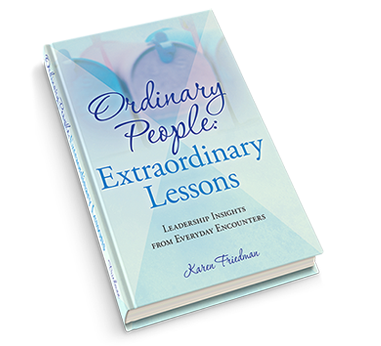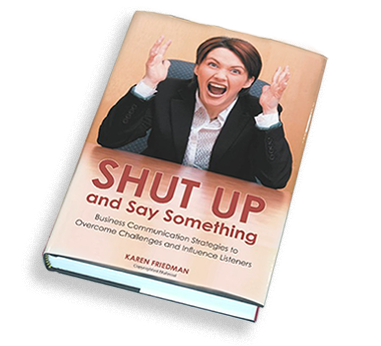Brian Fugere and several co-authors wrote a great book titled: “Why Business People Speak Like Idiots,” a look at the frightening world of corporate speak. I would like to suggest a sequel called: “Why Business People Create Slides that Put You to Sleep.”
You’ve seen these people. You’ve probably been in their audiences. They have 495 slides which they read to you one by one in a monotone voice with no facial expression and expect you to follow along in a font that even your ophthalmologist couldn’t translate.
For starters, most of us can read by ourselves, thank you very much. Secondly, assuming we can read, maybe the presenter should just send us the slides and spare us from having to attend another boring meeting?
Am I being too sarcastic? Perhaps. But, I spend most of my time coaching people through presentations and critical meetings for which they’ve spent a lot of time designing and perfecting slides, but little if any time thinking through their message. Creating slides is not communicating. The only thing connection made in most slide shows is the plug that you stick into the socket to make the projector run.
So, what is a presenter to do?
- No One Came to See a Slide Show — Before you create a single slide, think about what you want to say. What do you want people to think, do, know or feel when you’re done speaking? If the slides crashed, could you still tell the story? If your answer is no, then you don’t truly own your material. Write your talk first and then create slides that reinforce what you’re saying instead of using your slides as a script.
- Talk, Don’t Read — It’s important to create slides that speak in phrases, not sentences so you talk instead of read. Eliminate words such as, if, the, in, on, and of. Instead, use three to five words per line to reinforce what you’re saying. Look for opportunities to reveal the lines to prevent people from reading ahead so you focus their attention where you want it.
- Don’t Put Everything on the Slide — Your job is to help listeners make sense of information. If you cram too much on the slide, they’ll be reading item Z while you’re still talking about item A. Create colorful charts, graphs and pictures that highlight data, evoke emotion and make the information more relevant. That’s what listeners remember.
- Think Headline — Think of your slide as a Broadway production. Often a single stage will contain lots of little stages which are spotlighted according to what the director wants you to see. You want to do the same by focusing your listener’s attention where you want it. For example: “Look at the purple box on the left compared to the yellow box on the right. It’s nearly double the size. That means we’ve doubled our profits.”
- We Don’t Do It That Way Here — Just because others drone on doesn’t mean you have to be boring, too. If a slide set has been designed for you, you should still look for ways to share examples that personalize the information and put it in context for your audience. If you are required to present every single slide, that doesn’t mean you have to read every point.
- Hit Them Over the Head — Your first few words determine whether your audience tunes in or out. So, why do people need a slide to tell the audience what they are going to talk about? Don’t they know why they’re here? When you open your mouth, hit them over the head with a story or example that engages and grabs attention so they understand why they should care. Ask what’s in it for them?
Finally, it’s important to remember slides won’t sell your ideas. Only you can do that. So don’t think of your PowerPoint show as a script. You don’t want to follow your slides. You want the slides to follow you by reinforcing what you’re saying. Remember, no one came to see a slide show. They came to see you.








Leave a Reply
You must be logged in to post a comment.